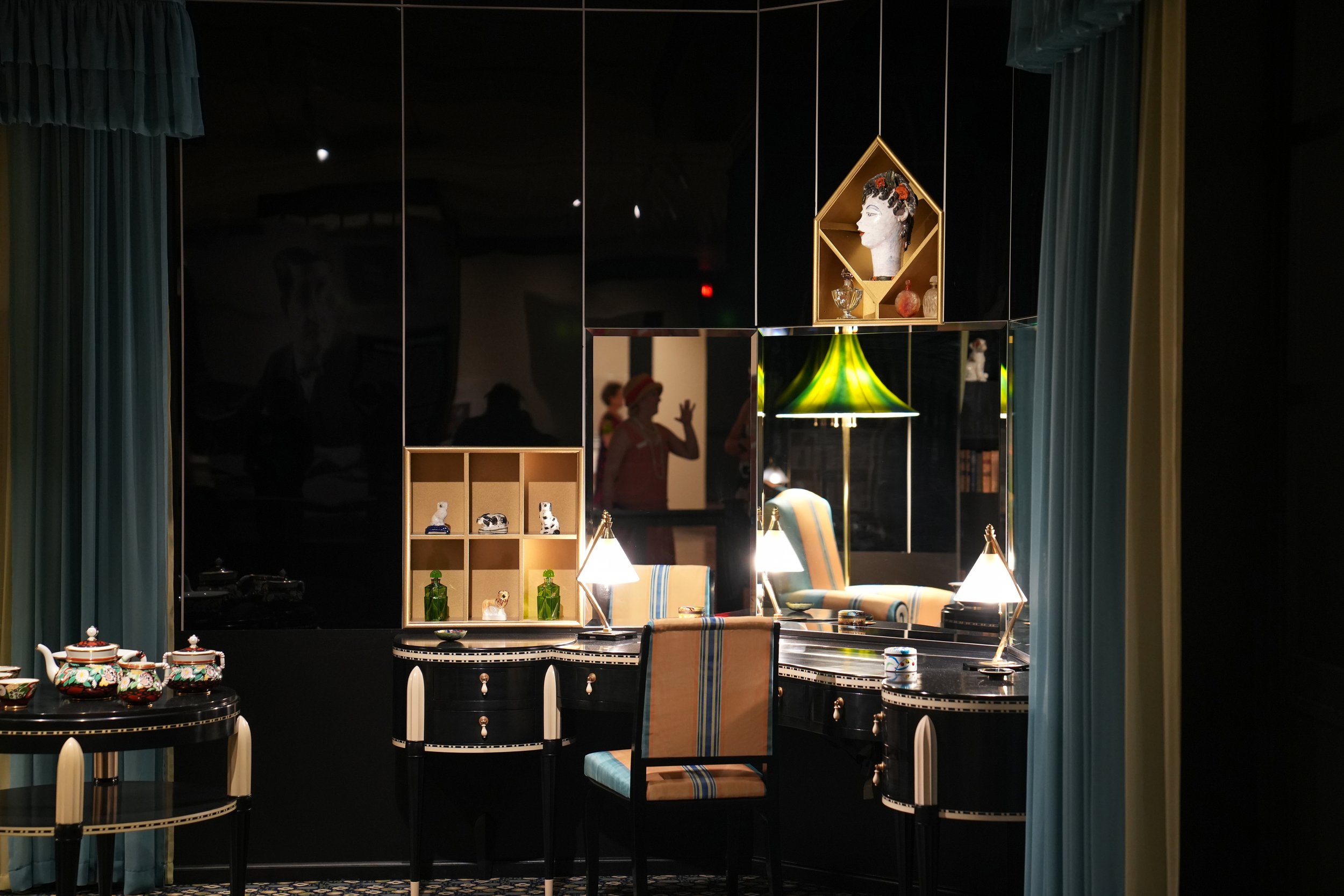Sleeping Beauty
Like the Roaring Twenties, the days to see Unlocking an Art Deco Bedroom by Joseph Urban at the Cincinnati Art Museum are fleeting.
The lavish bedroom designed by Austrian-born architect Joseph Urban for 17-year-old Elaine Wormser closes Sunday, Oct. 2.









About the Architect
Joseph Urban (1872–1933) was a prolific illustrator, scenic designer, and architect who trained in fin-de-siècle Vienna. During this period, many Viennese artists, including Urban, rejected historical precedents and embraced a new modern art. In 1911, he relocated to the United States to become the art director of the Boston Opera. He quickly became one of the most revered set designers of the early twentieth century and worked tirelessly across a range of media, from film to architecture, to create and promote a fresh style that reflected the times.
Some of Urban’s most notable projects include set designs for the Metropolitan Opera, the Ziegfeld Follies, and Hollywood films; the first American gallery to showcase work by artists of the famed Wiener Werkstatte (Vienna Workshop); the building and interiors for The New School in New York; the color direction for the 1933 Chicago World’s Fair; interiors for Marjorie Merriweather Post’s Palm Beach estate, Mar-a-Lago; and the roof garden of Cincinnati’s Hotel Gibson (demolished in 1977).
More than 90 years after its completion, the Wormser Bedroom’s furnishings have been fully conserved and displayed to reflect their state as originally installed in Chicago’s Drake Tower and photographed in 1930.
“It is thrilling to present this bedroom for the first time in our galleries, with new scholarship and display approaches,” notes Amy Miller Dehan, the exhibition’s curator and Cincinnati Art Museum’s curator of decorative arts and design.
When Elaine Wormser Reis moved to Cincinnati in 1936, she brought nearly all of her bedroom with her—including the custom wall-to-wall carpet. The room’s elements, donated to the Cincinnati Art Museum by Elaine Wormser Reis in 1973, form the largest collection of Urban-designed furnishings held by a public institution.
One of Urban’s final commissions, the Wormser Bedroom features a daring combination of colors and patterns, black glass walls and a reflective silvered ceiling. The interior embodies the distinct modern design vocabulary that Urban developed and employed throughout his career, highlighting his talent as a colorist, his flair for the dramatic, and his skillful blend of Viennese artistic influences with the prevailing modern style now known as Art Deco.
“For decades, our understanding of the room was based on black-and-white photographs which fail to present Urban’s virtuosic combinations of color, pattern, and finish,” says Dehan. “The process of reconstructing the room has been a revelation. This exhibition reveals Urban’s boundless talent and contributions to the development of American Modernism as well as the bold messaging that women like Elaine Wormser projected when choosing the avant-garde style over backward-looking historical fashions.”
In addition to the bedroom, the exhibition features drawings, paintings, costumes, and related furnishings drawn from many American collections. A full-color illustrated book and an interactive website provide further context, including reflections on the experiences of the caretakers and unnamed craftspeople who are an integral part of the Wormser Bedroom story. Behind-the-scenes investigations and processes necessary to reintroduce the room to the public are also highlighted.

